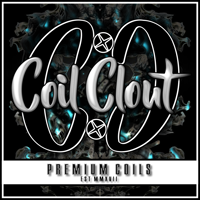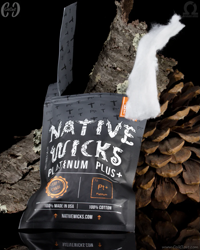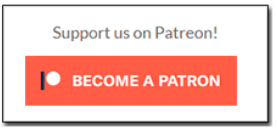CASAA Newsletter Autumn 2016
Autumn 2016
This instalment of CASAA’s newsletter was originally intended to come out in October. But, we were on an RV traversing the country lending the consumer voice to raising awareness about tobacco harm reduction and the legislative challenges we’ll be facing in 2017. Of course, in the wake of the US general election, we are looking at a significantly different political landscape at the federal level. The changes in our government will likely have a profound impact on regulations that affect our access to vapor products and other low-risk tobacco products.
In advance of the 2017-2018 legislative sessions, CASAA will be co-hosting a webinar with The Cating Group this December. Topics will include a preview of anticipated state legislative threats, the importance of meeting FDA compliance deadlines such as the upcoming registration and product listing requirement, and potential opportunities at the federal level to not only modernize the predicate date, but also to fundamentally change how low-risk alternatives to smoking are regulated. This webinar will be free and open to all. If you know anyone interested in attending, please make sure they are signed up to receive updates from CASAA. They can register here.
2016 Election
2016 marked the inaugural release of CASAA’s Voter Education Guide — THRvoter.org. Of more than 1,000 candidates running for US Congress, we received over 130 responses. Although the response to our survey wasn’t as high as we would have liked, it was more than we expected for a first-time effort.
Heading toward mid-term elections in 2018, we will be working to expand our voter guide to include state elections, similar to what our Kansas City chapter put together this year. If you are interested in helping CASAA with this state-level deployment, please contact us at [email protected]. Please include “State CQ” in the subject line.
Several states were faced with ballot initiatives this year that dealt with taxes on vapor products and/or smokeless tobacco. In California, Proposition 56, which was sold to voters as a necessary hike in cigarette taxes, will enact an equivalent tax of 60-70% wholesale on vapor products sold in the state. Even though Prop 56 passed, it is still unclear what the tax rate will be or even how it will be applied. On the other hand, Colorado (Amendment 72) and North Dakota (Measure 4) both voted down ballot initiatives that dealt with taxation of vapor/tobacco products.
Prior to the election, the outlook for the vapor industry appeared grim. However one might feel about the results of the US elections, the consensus is that there is a more visible pathway forward to enact genuinely beneficial regulation that will not stifle innovation or limit diversity. Our task going forward will be to help build these regulations and make sure they are built to last.
Despite the obvious political gains at the federal level, we are still anticipating that many states will move to enact taxes on vapor products as well as impose stiffer regulations. We also continue to be concerned that more state and local public health departments will be spearheading misinformation campaigns that discourage smokers from making the switch and help drive bad legislative and regulatory policy.
FDA
With the new White House administration, it is likely that we will see notable changes of key personnel in regulatory agencies. There is no confirmation of this yet, but President-elect Trump signaled late in the campaign that his administration would be working to undo regulations that unfairly restrict small- to medium-sized businesses. Even though this is on the horizon in 2017-2018, the deeming regulations are still at present the law of the land, and vapor businesses should be working toward compliance.
Product registration is a major compliance deadline that is right around the corner in December (the 31st, to be precise). This article by Azim Chowdhury helps explain that process: “FDA’s Establishment Registration and Product Listing Deadline is Fast Approaching – Are You Prepared?”
If you are receiving updates from the Food and Drug Administration or generally paying attention to breaking news in the vaporsphere, you may have seen the headline “FDA Withdraws Direct Final Rule Describing Acceptance Threshold for Tobacco Product Applications.” Many have misinterpreted this to mean that premarket tobacco approval (PMTA) is no longer necessary. Some have even taken this to mean that the entire deeming rule has been withdrawn. Both of these interpretations are incorrect.
Simply put, the FDA has accepted feedback they received during the comment period for this particular rule. This feedback highlighted not only the unreasonably high standards the agency was setting for submitting a PMTA, but also the fact that submissions with critical errors would not have the opportunity to be corrected. By withdrawing this proposed rule, the FDA is acknowledging the need for the agency to rework this particular stage of the PMTA submission process. Again, the deeming rule that was published on May 10th, 2016 is still in effect, and industry stakeholders should be taking steps to comply if they wish to remain in business.
Misinformation
The Pasadena Public Health Department (PPHD) has received a $1.3 million grant from the CDC for a media campaign that is targeting the city’s minorities and misinforming them about the risks of vapor products. Like other campaigns we’ve seen in the past, the PPHD is trafficking in shame and ridicule in a misguided effort to pressure smokers to quit and to discourage smokers from making the switch to low-risk vaping.
If you would like to review the campaign for yourself, you can do so here. If you would like to share your thoughts with PPHD regarding this campaign, you can send your comments to
Pasadena Public Health Department
1845 N. Fair Oaks Ave
Pasadena, CA 91103
Or call: (626) 744-6014
Please be respectful and focus on your experience with vapor products. If you have family members who are willing to share their perspective on your experience, please encourage them to call or write as well.
Projects
The RTV Tour started on October 2nd in Las Vegas, NV. CASAA, along with the American Vaping Association (AVA) and the Smoke-Free Alternatives Association (SFATA), took to the road to spread awareness about vaping and what’s needed in congress to protect our access to vapor products. There are three videos that were produced during the tour with a fourth on the way. Please take a moment to watch and share.
Chapters
In July, CASAA announced the creation of our first chapter in Kansas City, MO. You can read more about the chapter program here. In September, we announced that Kristin Noll-Marsh, a founding member of CASAA, would be stepping down from the Board of Directors to accept the new position of Chapter Coordinator.
We are excited for both Kristin’s new role and the formation of the Kansas City Chapter. We will be working to develop the program in 2017 in order to establish more chapters around the country.
CASAA’s Testimonials Project, has collected more than 10,000 stories and continues to grow. We are working toward collecting testimonials with more detail so that we can provide state specific numbers to state and regional advocacy organizations that will assist them in their advocacy efforts.
Exercising your right to vote is vital to any advocacy effort. Engagement from voters carries weight with lawmakers as they consider input on legislation that comes before them. Lawmakers are not able to see how you vote, but they will certainly check to see if you are voting.
Legislative Update
National
Going into the 2016 election, the clear legislative strategy was to support including predicate date change language in the omnibus budget bill. Many expected the contents of an omnibus spending bill to be decided in early to mid-December. However, the incoming administration and Republican-controlled congress are making a decision to delay this until spring of 2017. As a result, the vehicle for the predicate date change language — the Cole-Bishop amendment — is no longer in play. However, there is still value in referencing the language when communicating with lawmakers on this issue.
Although modernizing the predicate date is not likely to happen this year, it is still a necessary step toward developing useful and fair regulation and support for this effort is ongoing. The larger effort will be focused on creating a separate category for low-risk products. With a more sympathetic government, developing this new regulatory regime is now more likely.
Pennsylvania
The Pennsylvania General Assembly will reconvene on January 3rd. Efforts by advocates in the state to change the tax on vapor products are continuing. Tentatively, a rally has been scheduled for the end of January in Harrisburg. We will share updates as plans for the rally become more solid.
Pennsylvania’s vapor tax took effect on October 1st, 2016. The law now requires retailers to pay a 40% wholesale tax on all vapor products. This tax is collected by licensed wholesalers, distributors, and manufacturers selling direct to retailers. Retailers were also required to take an inventory on October 1st and pay a 40% tax on everything they had in stock. This floor tax is due at the end of December 2016. In addition to the taxes imposed on retailers, consumers purchasing from unlicensed out of state retailers are required to report their purchases to the state and pay a 40% tax on the retail price of what they buy. The report and payment is due at the end of every month following a month during which vapor products were purchased.
California
Proposition 56, which will impose a tax on vapor products equivalent to the tax on cigarettes, passed by a wide margin. The Board of Equalization will be determining the details of the tax rate and how this new tax will be applied to vapor products.
Share:




